In the far west of Tibet, in Ngari Prefecture lies the most sacred mountain in the world, the holy Mount Kailash. Considered sacred in four religions – Buddhism, Hinduism, Jjainism, and Bonpo – Mount Kailash is the most popular place for pilgrims, who travel there throughout the year to pray at the mountain and circumambulate the holy kora routes around it. Known in Tibetan as Gang Rinpoche, the mountain lies in the Gangdise Mountain Range, which is part of the Transhimalayan range in western Tibet. Lying close to the source of the four major rivers of Asia, the Indus, the Sutlej, the Brahmaputra (Yarlung Zangbo in Tibetan), and the Ghaghara (a tributary of the Ganges), the mountain is considered to be the legendary Mount Meru of Buddhist, Hindu, and Jain mythology, which is the center of the universe.
Every year, pilgrims follow a tradition that dates back thousands of years and journey to the mountain in a pilgrimage, many of them walking for thousands of miles to reach the holy mountain. It is also the site of the Saga Dawa Festival, one of the most sacred religious events in Tibet, and as the most sacred of mountains, climbing to its peak is considered a sin and has never been done, and is now prohibited by the Chinese government. This is believed by all the religions that hold the sacred mountain in reverence, and many old Tibetans claim that all those who have defied the prohibition have died in doing so.
Mount Kailash Kora
There are two kora routes at Mount Kailash, the inner kora and the outer kora. The outer kora is the more popular route for tourists, and the primary route for many Tibetan pilgrims, while the inner kora is a much shorter route around Mt. Yinjietuo, a smaller peak below the peak of Kailash. The outer kora around Mt. Kailash is one that is long and arduous, covering a distance of 52 kilometers around the base of the mountain, and taking around three days to cover for most tourists and travelers. Starting from the village of Darchen, the trek passes through beautiful valleys and over a pass of more than 5,000 meters along its route. Inside the route of the outer kora there are three monasteries of Tibetan Buddhism, which are Chuku Monastery, Drirapuk Monastery, Dzultripuk Monastery, while on the inner kora route there are two more, Selung Monastery and Gyangzha Monastery.
While many tourists traveling to Mt. Kailash take around three days to complete the outer kora, many Tibetan Buddhists believe that it should be done in one day. For someone in good physical condition, the outer kora can be completed in around 15 hours, over very uneven terrain. There is also a greater challenge to the completion of the kora, and many pilgrims perform the traditional kora by performing body-length prostrations all the way around the mountain. This is often done on their hands and knees for the entire 52-kilometer route, and the pilgrims prostrate themselves full length on the ground, marking the spot where their fingers reach, then rise and pray before crawling forward to that spot and repeating the prostration over again for the whole route. Completing the route this way can take several weeks, and the pilgrims often carry everything they need for the trip with them.
>>Check the Details of 15 Days Kailash Pilgrimage Small Group Tour
Kailash Saga Dawa Festival
Held during the fourth month of the Tibetan lunar calendar, the Saga Dawa Festival at Mount Kailash is one of the most significant of all the Tibetan religious festivals. The fifteenth day of the fourth lunar month is believed to be the day of the birth, enlightenment, and death of the Buddha Sakyamuni. It is believed that generous giving, strict adherence to the tenets of Buddhism, and stopping killing animals for meat can help the person accumulate more merits on the journey to enlightenment.
During the month-long celebrations of Saga Dawa, pilgrims from all over the world descend on the mountain to walk the holy kora around the sacred site, and there are many religious ceremonies that are performed at the mountain, including the taking down and renewal of the Tarboche flagpole, which holds thousands of prayer flags. Tradition says that if the flagpole is not set perfectly upright, then the land of Tibet is in trouble. As such, only the best are allowed to set the flagpole in the ground, ensuring the safety of the land and its people for another year.
>>Check the Details of 15 Days Tour Kailash in Saga Dawa Festival
Appreciate Kangkyam Glacier
Part of the trek around Mount Kailash passes by the entrance to the valley where the beautiful Kangkyam Glacier lies. This stunning glacier lies on the north face of the mountain, descending towards the valley below. Normally visited on the second day of the kora, it is a two-hour round-trip trek from Drirapuk Monastery to the tongue of the glacier, crossing over the rough glacial moraine to the packed ice of the glacier itself.
Sitting as it does, high on the route around Mount Kailash, the glacier is not visited by many people, and is one of the remaining unspoiled spots in the region. One of several glaciers that once descended from the slopes of the sacred mountain, Kangkyam Glacier is the only one left, and is a beautiful place from which to view the mountain’s peak.
Manasarovar Lake Yatra
A short distance to the south of Mount Kailash lie the twin lakes of Manasarovar and Rakshastal. Once part of the basin of the Sutlej River, the lakes were separated by tectonic activity millions of years ago, and Lake Rakshastal is now a saline lake, while Lake Manasarovar is a freshwater lake.
Believed to be holy in Tibetan Buddhism, as well as Hinduism, Jainism, and Bonpo, the lake is a sacred site for all four religions, and has its own kora or Yatra route around the shores. Fed by the glacial run-off from Mount Kailash, Manasarovar overflows into its sister lake nearby, though not at a rate high enough to alter the salinity of Rakshastal.
One of the three Great Sacred Lakes of Tibet, Lake Manasarovar has a special significance in Tibetan Buddhism, and it is associated with the legendary Anavatapta, the lake where Queen Maya of Sakya conceived her son, the great Gautama Buddha, through whose teachings Buddhism was founded. It is also reported in Buddhist scrolls that he stayed near the lake meditating on several occasions, which are believed to be times when he spoke to his mother, Maya, for guidance.
Visit Chiu Monastery
Sitting atop a craggy hill overlooking Lake Manasarovar, lies the Chiu Monastery. An important gompa in Tibetan Buddhism, the main chapel of the monastery contains the meditation cave of the Guru Rinpoche, where you can see the imprint of his foot embedded in the stone. Looking like part of the rugged cliff it sits on, the monastery is built on a Buddhist shrine that dates back to the 8th century.
There is a kora route around the monastery, on the side of the rocky crag it sits on, which follows a narrow path along the cliff and around the sides of the monastery. The monastery also has several shrines around its kora route, one of which is made up of the skulls and horns of dead yaks, and there are many prayer wheels set into the walls of the monastery itself, for pilgrims to use while walking the kora route.
View Gurla Mandhata
To the south of Lake Manasarovar, in Burang County of Ngari and close to the border with Nepal, lies the mountain known as Gurla Mandhata, or Naimona’nyi. The highest peak of the small sub-range of the Himalayas, Nalakankar Himal, its peak sits at 7,694 meters above sea level, and is the 34th highest peak in the world. It is also notable for being one of only a few peaks over 7,000 meters that lie wholly within Tibet, the other major peak being Mount Shishapangma.
Sitting in an almost straight line with Lake Manasarovar and Mount Kailash, the mountain stands tall in the distance, around 25 kilometers from the shores of Lake Manasarovar. A beautiful sight on the near horizon, the mountain’s snowy slopes make a great shot for photographers, as it stands above the plains that separate it from the holy lake.
Enjoy Tirthapuri Hot Springs
Lying on the north bank of the Sutlej River, to the northwest of Mount Kailash, is the monastery of Tirthapuri. Famous for its sacred hot springs, it is also known as the Guru Rinpoche Monastery because of the meditation cave that is associated with Padmasambhava.
The monastery has a one-hour kora circuit around its site, and the typical follow up to the completion of the kora is to bathe in the delightfully refreshing and relaxing hot springs. The natural pools are fed by underground hot springs, and are one of the many natural hot springs sites that can be found on the plateau.
The kora route around the monastery also has some major significance in Tibetan Buddhism, with several small sites along its length that are important in the religion. The first of these are the sour and sweet earth holes, sites where pilgrims will dig for small stones that are believed to have healing properties.
The next site along the route is the karma-testing hole, in which pilgrims can test their levels of karma before visiting to pray at the monastery. The hole lies in a rock beneath a solitary prayer wheel, into which the pilgrims place their hands and pull out two of the many stones that lie within. Two white stones indicate good karma for the pilgrim, while two black stones mean bad karma. One of each usually means that your karma needs some work, and pilgrims follow penances and sacred rituals to increase their good karma.
To the south of the monastery there is a circle of mani stones that marks the place where the gods danced when the Guru Rinpoche was enshrined in the monastery. There are more mani walls further east of the site, the longest one being an immense 200 meters in length, which is saod to be the path of an arrow that was shot at the guru by a demon, and which he turned into the mani wall in mid-flight. Other shrines and chortens also dot the landscape around the monastery.
.jpg)



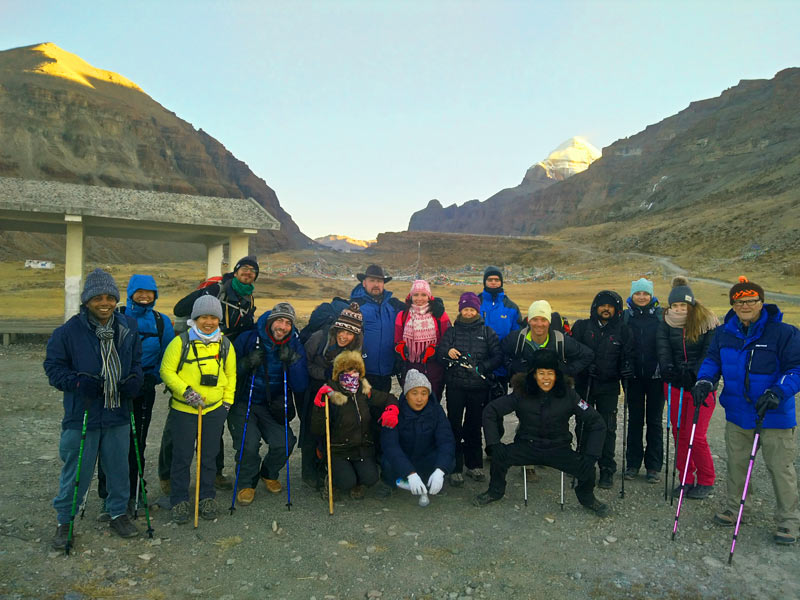
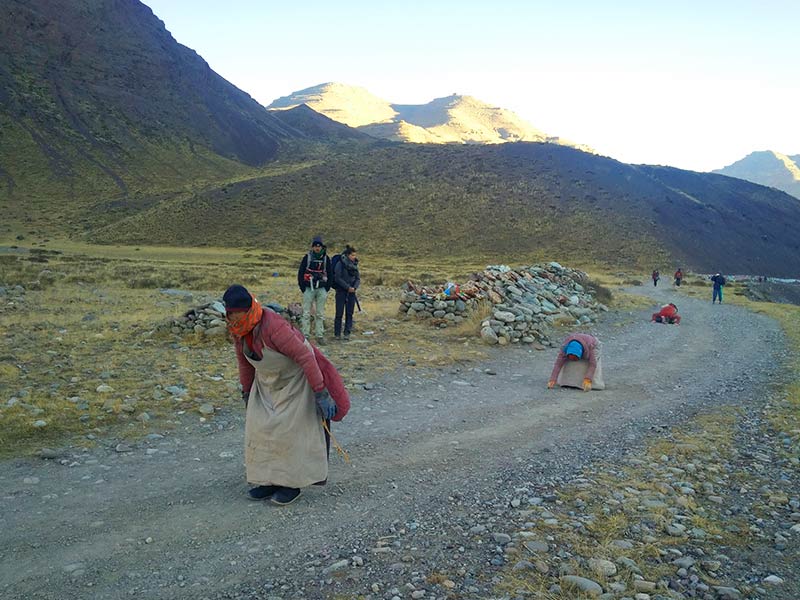
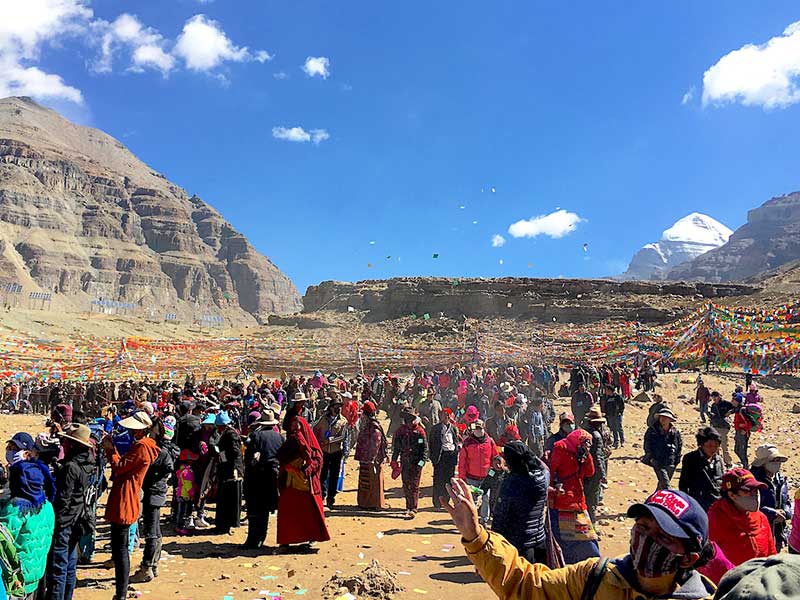
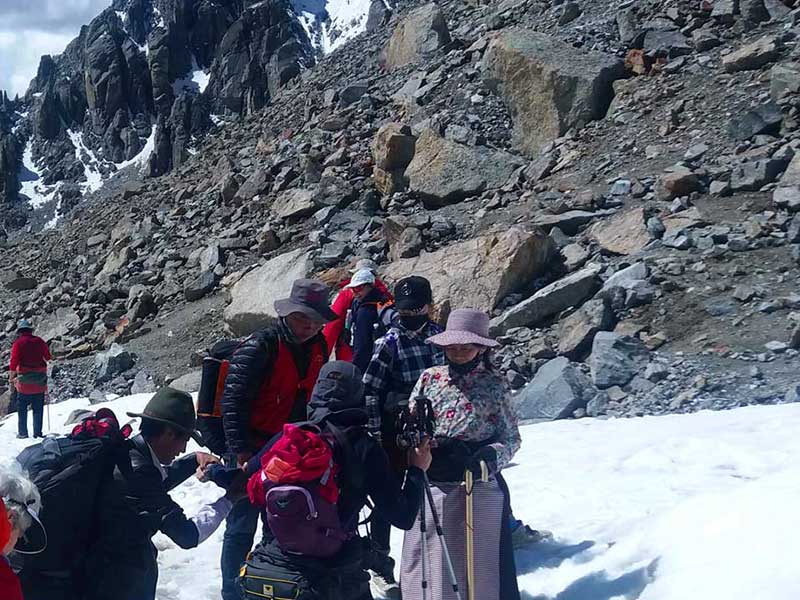
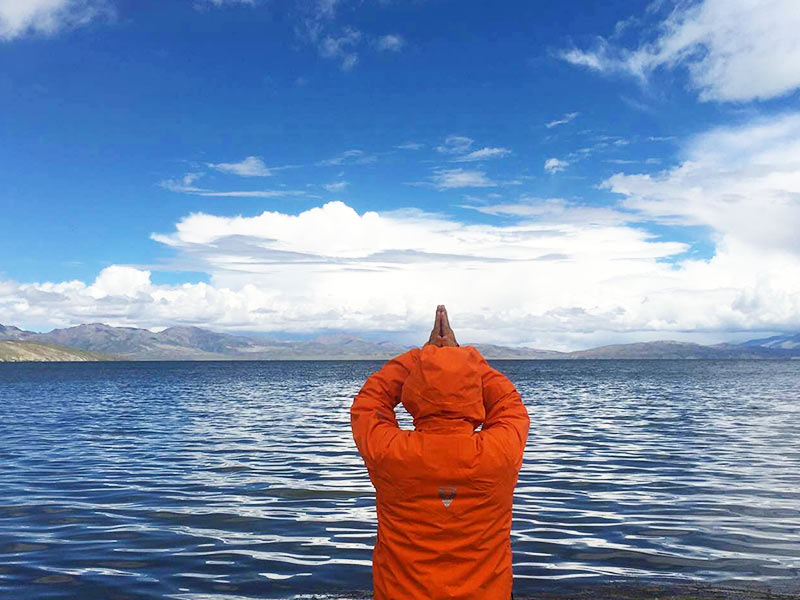
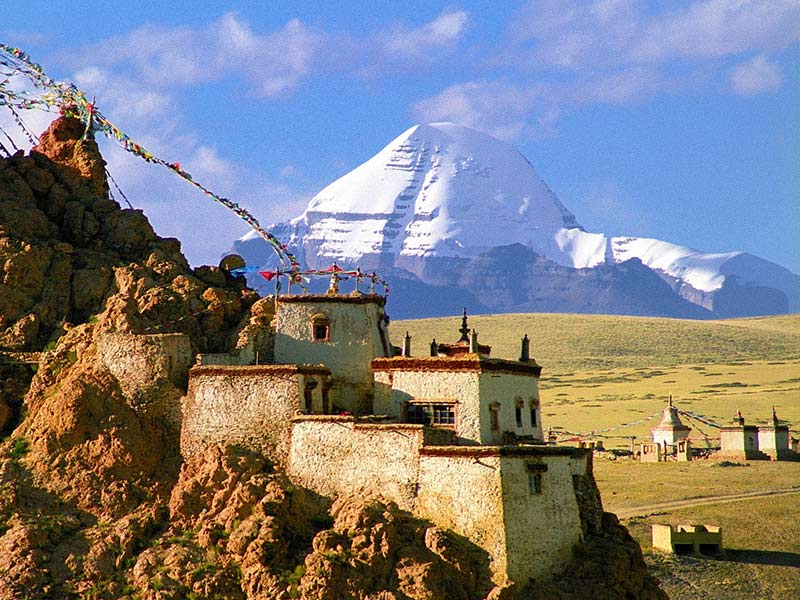
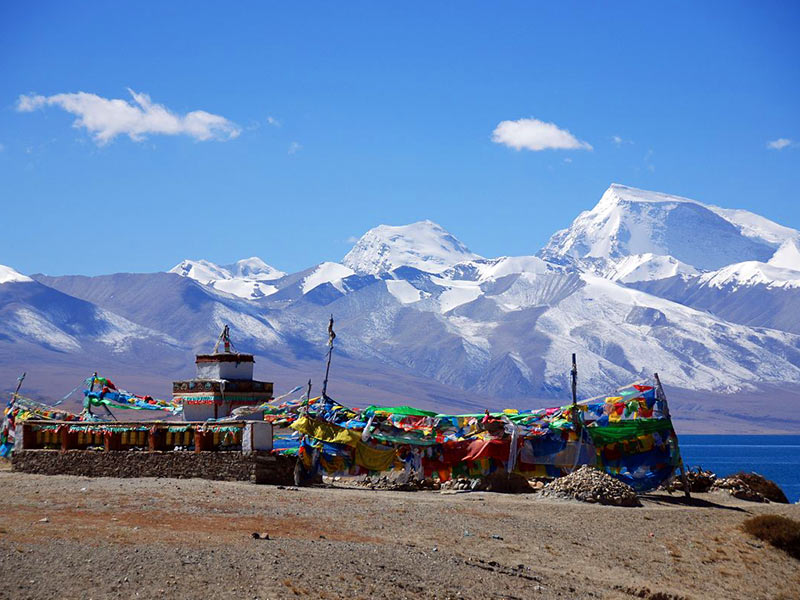
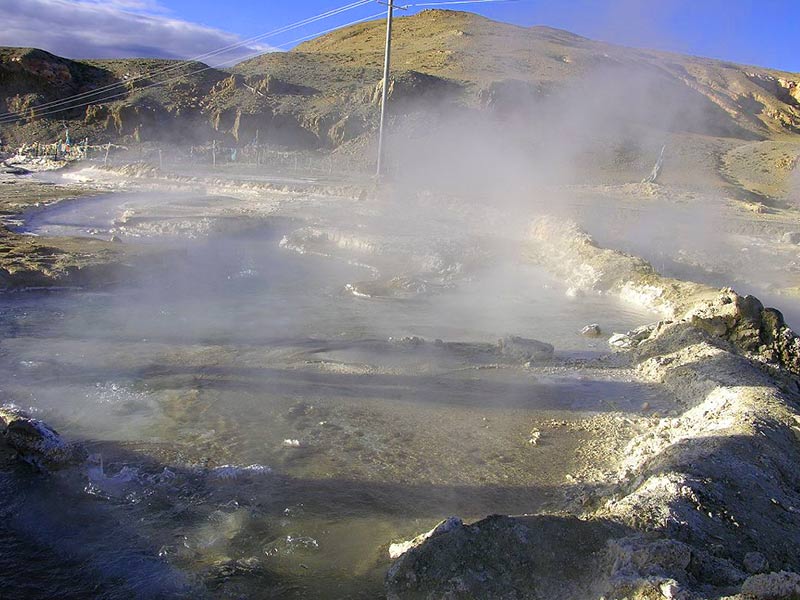

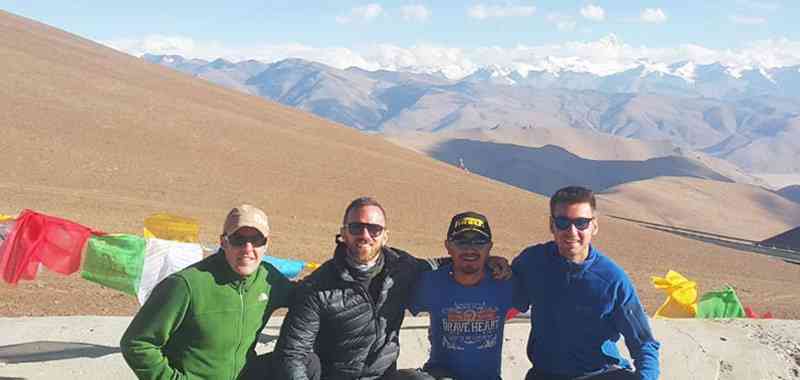
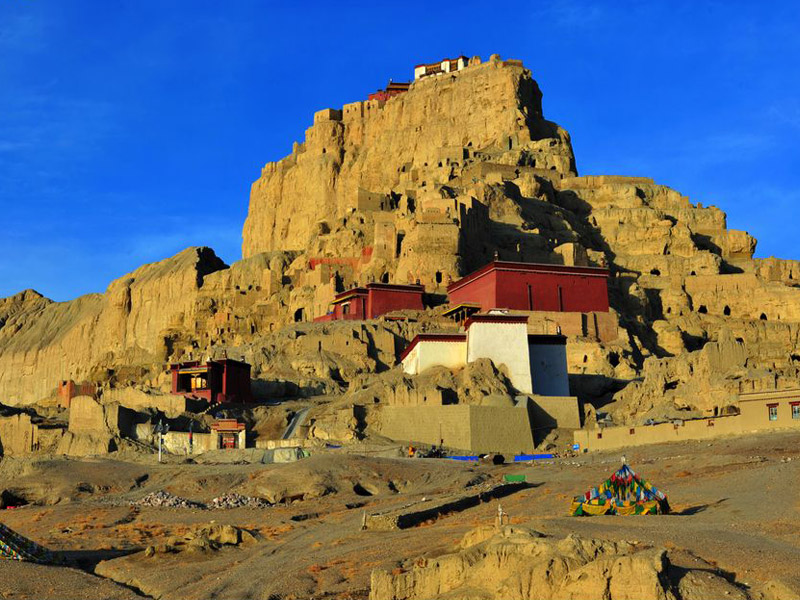
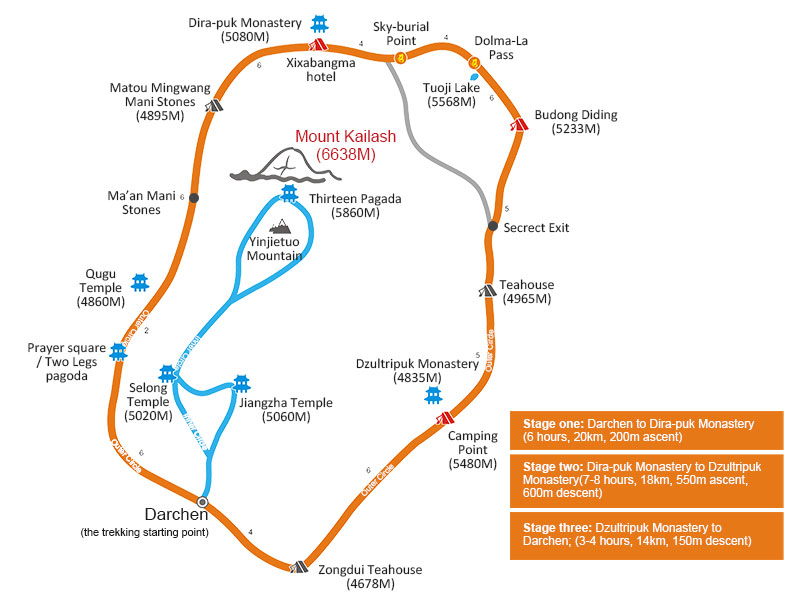







0 Comment ON "Top Seven Things to Experience around Mount Kailash"